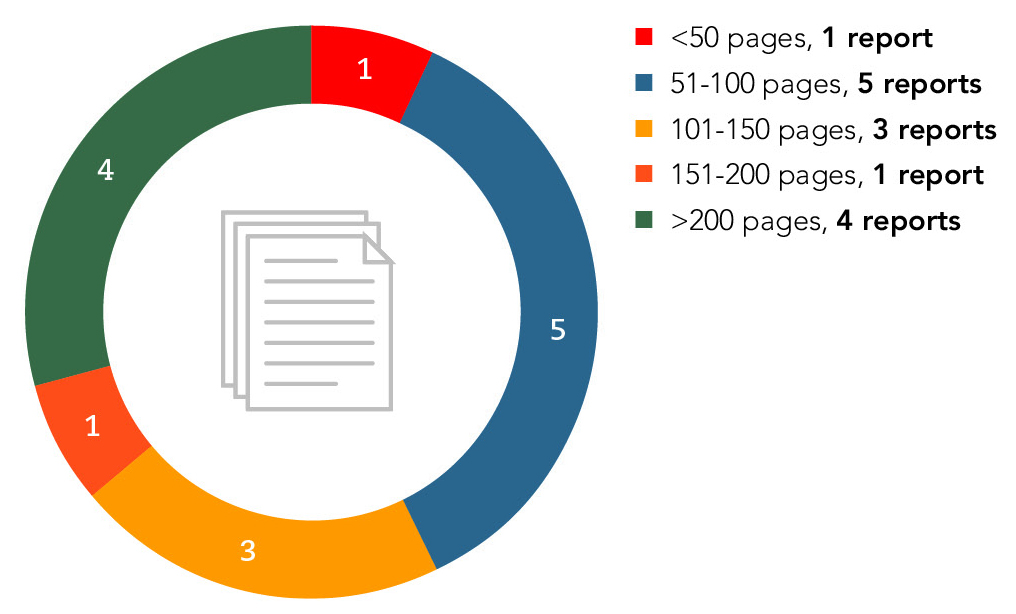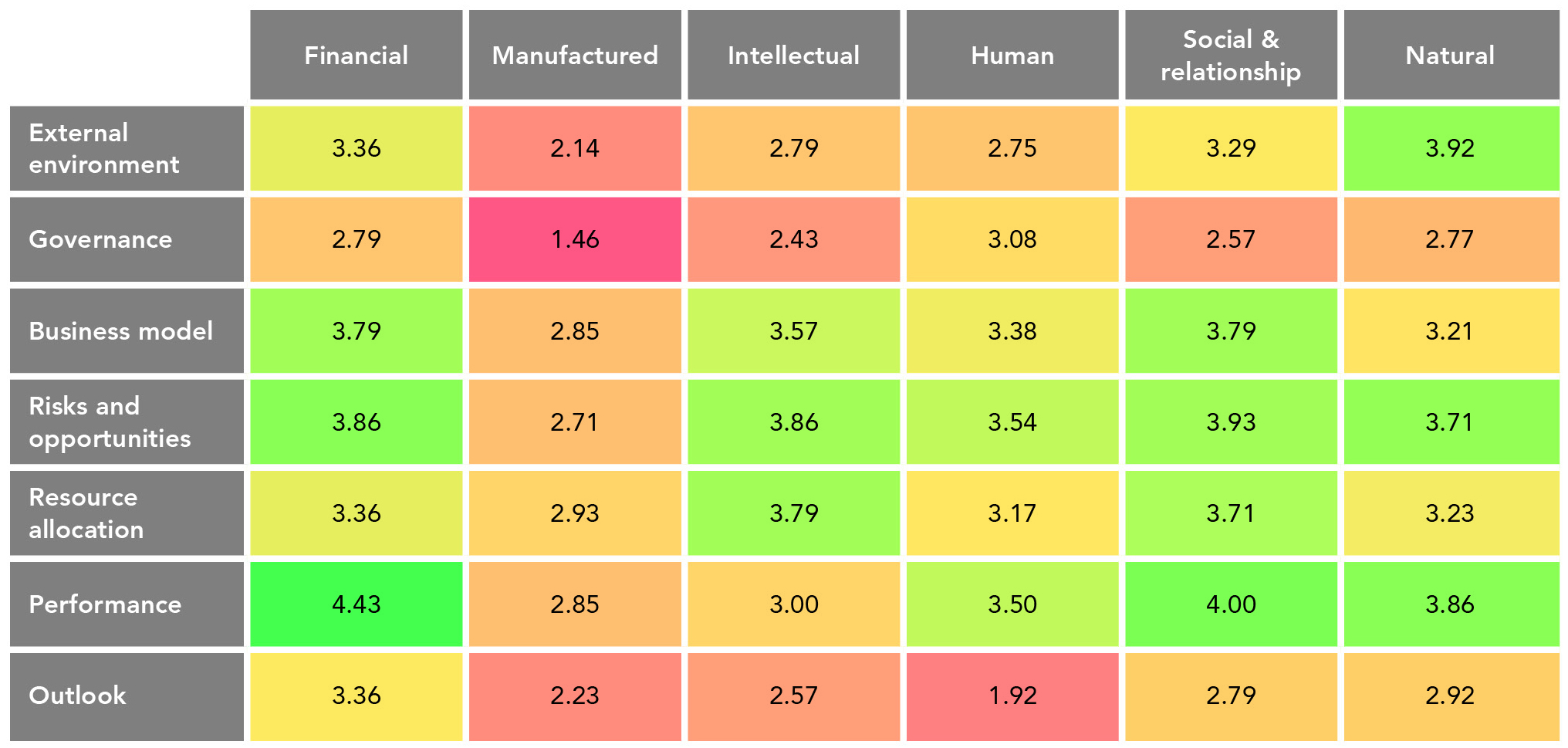Supporting the global profession
Well-embedded integrated thinking can make organisations more resilient in the face of challenges, like those that arose from the COVID-19 pandemic.

The integrated reporting process can kick-start integrated thinking, by bringing people from across the organisation together through the reporting cycle. At the same time, for organisations to obtain the full benefits, the reports need to communicate this to investors and other external stakeholders.
This report looks at three key ways in which integrated thinking is communicated in the annual integrated report:
- clear communication of strategy,
- pertinent discussions about non-financial value drivers that form the basis of the multi-capitals model, and
- consistency between the narrative report and the financial statements.
ACCA reviewed fourteen 2019/2020 integrated reports of companies in the IIRC’s <IR> Business Network. Our reviews and interviews with some of these companies revealed:
- Divided views about the purpose of an integrated report, with nearly half of the companies positioning their integrated reports as sustainability reports
- Strategy and strategic goals are not always communicated coherently: reporting on governance, business model and outlook are often divorced from strategy, and lack consideration of future horizons
- Despite the increased focus on sustainability, sustainability objectives are not yet fully connected to the overarching corporate strategy
- Multi-capitals thinking is yet to take root: at present, key value drivers are not discussed consistently through integrated reports, and this may indicate that there is not yet consensus across the business about what the key value drivers are
- The integrated report is not always consistent or connected with the financial statements, and vice versa: impairments recorded in the financial statements are almost never referenced in integrated reports.
Throughout the report, we provide best practice examples and highlight practical tips to guide more organisations on the path to integrated thinking and integrated reporting.
-
What is integrated reporting?
"The primary purpose of an integrated report is to explain to providers of financial capital how an organization creates, preserves or erodes value over time. An integrated report benefits all stakeholders interested in an organization’s ability to create value over time, including employees, customers, suppliers, business partners, local communities, legislators, regulators and policy‑makers.to explain to providers of financial capital how an organization creates, preserves or erodes value over time."
International (IR) FrameworkAn integrated report should:
- ‘Have a combined emphasis on conciseness, strategic focus and future orientation, the connectivity of information and the capitals and their interdependencies
- Emphasize the importance of integrated thinking within the organization.’
(International <IR> Framework)
In striving to keep their mainstream annual reports concise, many companies are opting to publish separate reports aimed at serving different audiences or purposes.
Out of the 14 reports, 5 published separate sustainability reports. By contrast, 6 out of 14 organisations position their integrated reports as their sustainability reporting document, publishing them separately from the mainstream annual report and linking the report to the sustainability sections of their corporate websites.
These differing approaches may indicate that these organisations are having to reconsider what they want to achieve with their integrated report, in light of the growing demand for sustainability information from a wide range of stakeholders.
-
What is integrated thinking?
‘Integrated thinking: The active consideration by an organization of the relationships between its various operating and functional units and the capitals that the organization uses or affects. Integrated thinking leads to integrated decision-making and actions that consider the creation, preservation or erosion of value over the short, medium and long term’ (International <IR> Framework)
‘Integrated reporting: A process founded on integrated thinking […]’ (International <IR> Framework)
"Above all, integrated thinking is a unifying concept and a strategic tool that helps management to bring order to [a] manifestly complex environment."
Mervyn King, Integrated Thinking & Strategy: State of Play Report, IIRC, 2019
-
Communicating strategy
Reports made strong links from performance, risks and opportunities to strategy. But many organisations found challenges in:
- setting out clear time frames for the execution of strategies
- connecting strategy and the organisation’s use of / effect on the capitals
- communicating governance, outlook and the business model in a strategically focused way
Governance is an area where improvements in reporting – and perhaps also in practice – should be prioritised. Disclosures tend to be compliance-focused, lacking in strategic focus and failing to demonstrate the board’s stewardship over the key value drivers.
This suggests that either integrated thinking is not happening at the board level, or the integrated thinking process is not being reported clearly enough.
-
Multi-capitals model
‘Capitals. Stocks of value on which all organizations depend for their success as inputs to their business model, and which are increased, decreased or transformed through the organization’s business activities and outputs.
‘The capitals are categorized in the <IR> Framework as financial, manufactured, intellectual, human, social and relationship, and natural.’ (International <IR> Framework)
‘To manage a business effectively in the 21st Century company boards need access to information and data from across the different dimensions of value – the six ‘capitals’ […] but these drivers of value do not sit in isolation from one another; just as we live in a world of interconnected risks, there are trade-offs between the use of different capitals that need to be assessed and explained.' (Integrated Thinking & Strategy: State of Play Report, IIRC, 2019)
Understanding the often-complex interrelationships between the capitals, and how they affect strategy, is a core aspect of integrated thinking. But our reviews suggest that multi-capitals thinking is still in its early days: key value drivers are often not discussed consistently through integrated reports, indicating perhaps a lack of consensus across the organisation about what the key value drivers are.
-
Consistency with the financial statements
As the IFRS Foundation sets up a Sustainability Standards Board to operate alongside the International Accounting Standards Board (IASB), and as momentum continues to gather on the implementation of the TCFD recommendations, the consistency and connectivity between the ‘front half’ narrative report and the financial statements will come under increasing scrutiny.
Consistency between narrative reporting and financial reporting is also an indicator of integrated thinking: demonstrating whether a forward-looking approach to creating value is really reflected in the way the organisation performs against its declared strategy.
"Out of 11 companies that had recorded impairments in the financial statements (to financial instruments and tangible fixed assets such as production plants and assets under construction), only one discussed the impairment in the integrated report. "
The issue of consistency between financial statements and narrative reporting is also explored in our report, Climate Change Risk-related Disclosures in Extractive Industries.
Recommendations
2022 will be an Olympic test for reporting. In the throes of the global pandemic, investors and other stakeholders will expect to see changes to risk and opportunities, strategies and business models in integrated reports.
It is particularly likely that the outlook sections of reports will be keenly read by investors and others. In these conditions, authenticity and transparency will be rewarded rather than punished.
Top 10 practice tips
- Collaborate, from the start: Plan the report with a cross-functional team, with teams from across the organisation working together.
- Tone from the top: Active steering and oversight from a forward-looking board that is willing to learn and embed integrated reporting and thinking across the organisation.
- Materiality process as a management tool: Use the materiality process to focus on risks and opportunities that have the most impact on value creation, and develop strategy accordingly.
- Stakeholders and purpose: Understand how each key stakeholder group enables your organisation to fulfil its purpose, and consider their legitimate needs and interests when developing strategy.
- Focus on strategic goals: Identify a core set of long-term strategic objectives,
develop rolling targets, and report on these consistently from year to year. - Connect strategies: Understand and articulate how topic-specific strategies
and operational plans work together to support core strategic goals. - Break out of the template: Think consciously about how your unique business model supports the achievement of strategic goals, and make this link clear in the report.
- Adapt the model: Know which capitals and components of capitals really matter to the achievement of your organisation’s purpose and strategy and ability to create value, and report on them in terms that make sense to internal and external stakeholders.
- Show why you care: Clearly explain the value of different capitals to your organisation.
- Work at the connections: Put in place active mechanisms to ensure that the integrated report is consistent with the financial statements – in the numbers, the events and transactions reflected, and in its underlying assumptions.
Supporting the global profession
"Our reviews suggest that multi-capitals thinking is still in its early days: key value drivers are often not discussed consistently through integrated reports, indicating perhaps a lack of consensus across the organisation about what the key value drivers are."





